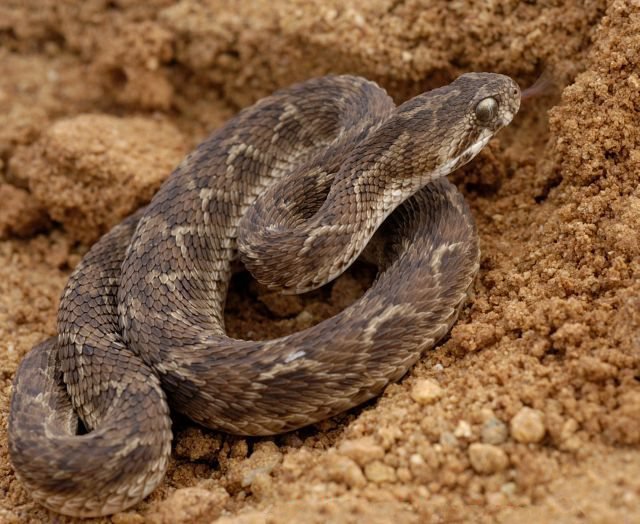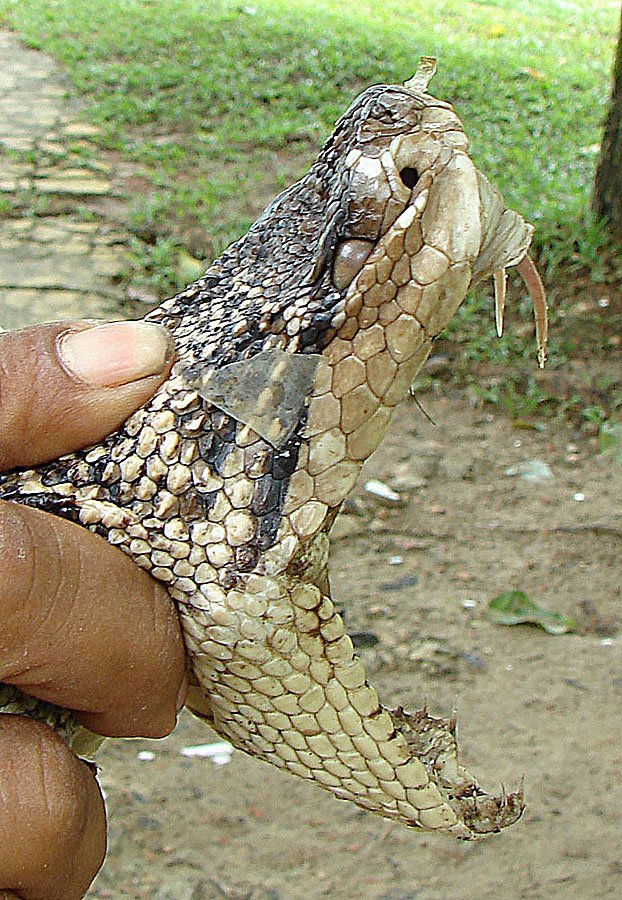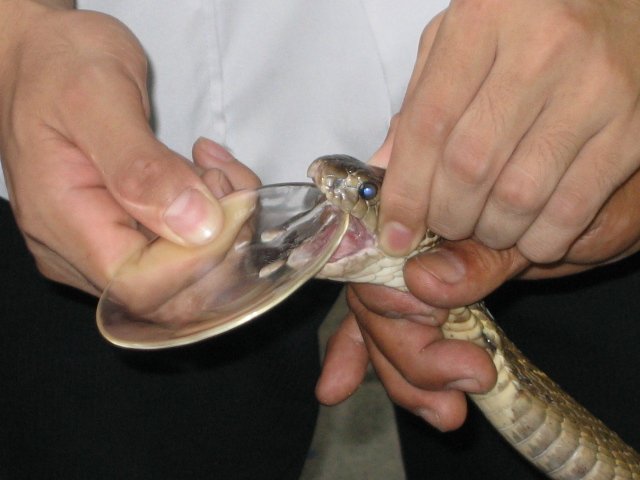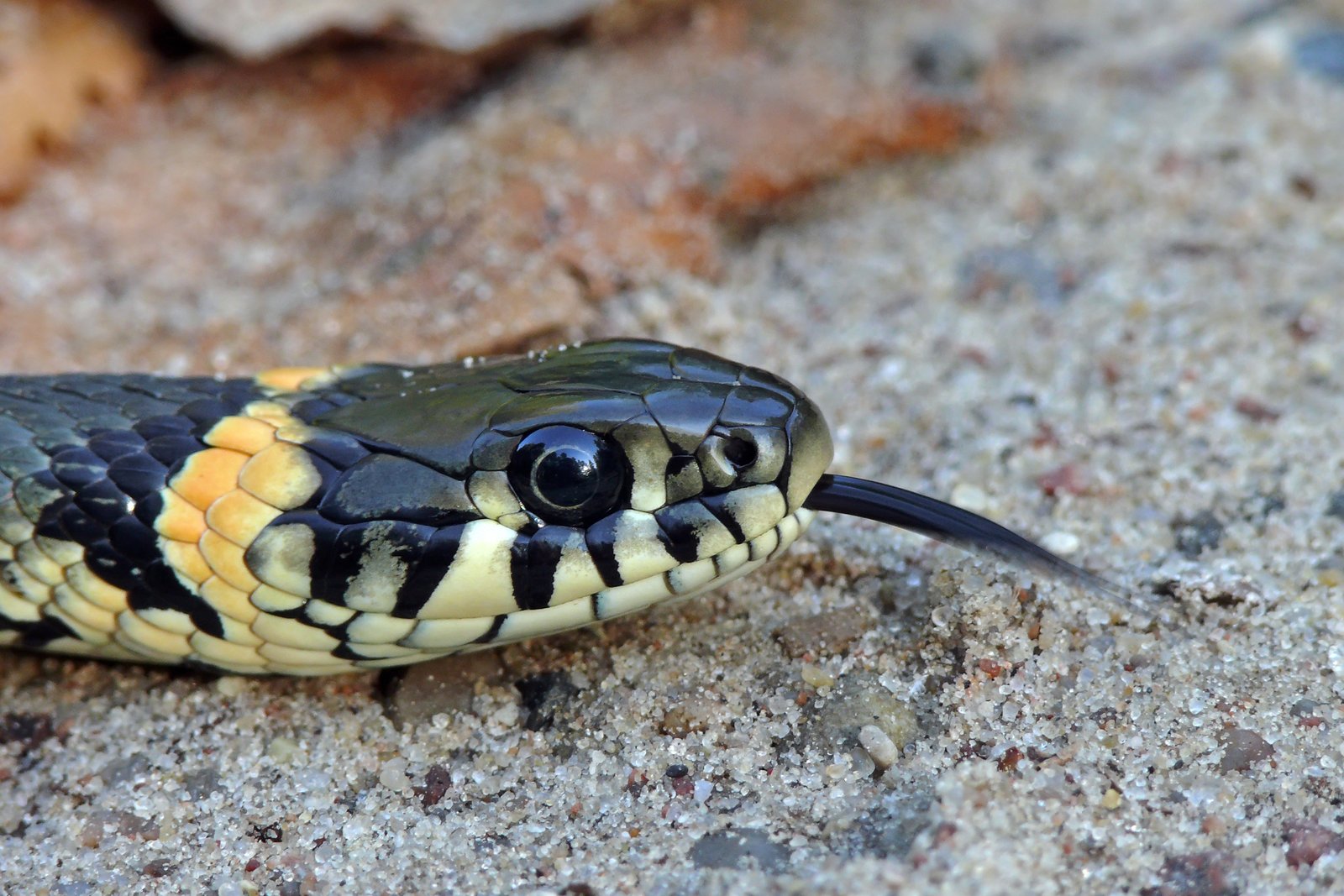Picture this: you’re hiking through a dense forest when you spot a sleek serpent slithering across your path. Your heart races as one question flashes through your mind – is this snake dangerous? The truth is, out of nearly 4,000 snake species worldwide, only about 600 are venomous enough to harm humans. But why did nature create such a dramatic divide in the snake kingdom? The answer lies in millions of years of evolutionary innovation, survival strategies, and pure biological brilliance that will completely change how you think about these fascinating creatures.
The Evolutionary Arms Race That Started It All

Venom didn’t just appear overnight in snakes – it evolved through an incredible evolutionary arms race that began over 100 million years ago. Early snakes faced a critical survival challenge: how to subdue prey that was often larger, faster, or more aggressive than themselves. Those ancient serpents that developed even primitive venom-producing glands gained a massive advantage over their non-venomous cousins. Think of it like nature’s version of developing the first weapon while everyone else was still fighting with bare hands. Over countless generations, snakes with more effective venom survived and reproduced more successfully, passing on their deadly innovations to future generations. This process created the incredibly diverse and sophisticated venom systems we see today, from the lightning-fast neurotoxins of cobras to the tissue-destroying enzymes of vipers.
The Secret Chemistry Lab Inside Venomous Snakes

Every venomous snake carries what’s essentially a mobile chemistry laboratory in its head. These venom glands are modified salivary glands that have evolved into incredibly sophisticated poison factories. The process is mind-blowing – specialized cells called serous cells produce complex cocktails of proteins, enzymes, and toxins that are then stored in muscular sacs. When a snake strikes, powerful muscles squeeze these glands like a deadly syringe, forcing venom through hollow or grooved fangs directly into the victim. What makes this even more remarkable is that many venomous species can actually control how much venom they inject, saving their precious chemical ammunition for when it’s truly needed. Some snakes can even adjust their venom composition based on the type of prey they’re hunting – it’s like having a personalized poison recipe for every occasion.
Why Non-Venomous Snakes Chose a Different Path

Non-venomous snakes aren’t evolutionary failures – they’re success stories that chose entirely different survival strategies. These serpents developed incredible physical adaptations that made venom unnecessary for their lifestyle. Constrictors like pythons and boas became living hydraulic presses, capable of exerting pressures that would crush a car. Their muscular bodies can generate forces exceeding 300 pounds per square inch, effectively cutting off blood circulation to their prey’s vital organs. Other non-venomous species became speed demons, relying on lightning-fast strikes and powerful jaws to overwhelm their victims before they could escape. Some developed specialized hunting techniques, like the egg-eating snakes that can swallow eggs three times larger than their head diameter. The energy that venomous snakes invest in producing complex toxins, non-venomous species channeled into developing these alternative superpowers.
The Incredible Diversity of Snake Venom Types

Not all snake venoms are created equal – in fact, the variety is absolutely staggering. Neurotoxic venoms, like those found in cobras and coral snakes, attack the nervous system with surgical precision, causing paralysis and respiratory failure within minutes. Hemotoxic venoms, prevalent in vipers and rattlesnakes, are like molecular wrecking balls that destroy blood cells, damage blood vessels, and cause massive internal bleeding. Then there are cytotoxic venoms that literally dissolve tissue at the cellular level, creating horrifying necrotic wounds that can take months to heal. Some snakes have evolved combination venoms that work on multiple body systems simultaneously – imagine facing a poison that attacks your blood, nerves, and tissues all at once. The most fascinating part is that even closely related snake species can have dramatically different venom compositions, each perfectly tailored to their specific hunting needs and prey preferences.
The Geographic Patterns That Shaped Venom Evolution

Geography played a crucial role in determining which snakes developed venom and which didn’t. In environments where prey was abundant and easy to catch, like small islands or areas with dense rodent populations, some snake species actually lost their venom over time through evolutionary pressure. The energy cost of maintaining venom production wasn’t worth it when food was readily available. Conversely, in harsh environments where prey was scarce, fast, or well-defended, venom became essential for survival. Australia’s incredibly venomous snake fauna is a perfect example – the continent’s unique evolutionary isolation and diverse prey species created the perfect conditions for developing some of the world’s most potent venoms. Desert environments also favored venomous species because they needed to conserve energy and couldn’t afford long, exhausting hunts in extreme heat. The result is a fascinating global pattern where venom distribution often mirrors environmental challenges and prey availability.
How Prey Animals Influenced Snake Venom Development

The relationship between snakes and their prey is like an endless game of biological chess, with each move forcing a counter-move from the opponent. When mammals developed thicker fur, some snakes evolved longer fangs to penetrate the protective barrier. When birds became faster and more agile, certain snake species developed ultra-fast-acting neurotoxins that could ground their flying prey within seconds. Fish-eating sea snakes evolved venoms specifically designed to work in aquatic environments, with toxins that remain effective even when diluted by water. Some prey animals developed resistance to specific toxins, which pushed snakes to evolve more complex, multi-component venoms that couldn’t be easily neutralized. This arms race continues today, with some ground squirrels showing remarkable resistance to rattlesnake venom, while the snakes respond by developing even more potent toxin combinations. It’s a perfect example of evolution in action, where neither predator nor prey can afford to stop innovating.
The Energy Economics of Venom Production

Producing venom is incredibly expensive from a biological standpoint – it’s like running a high-tech manufacturing plant inside your body 24/7. Venomous snakes must dedicate significant amounts of their daily energy intake to synthesizing complex proteins and maintaining their venom production systems. This energy cost is so substantial that many venomous species have evolved to be more selective about when and how they use their deadly arsenal. A rattlesnake might deliver a “dry bite” (no venom injection) in about 25% of defensive strikes, essentially bluffing to avoid wasting precious venom on a threat they can’t eat. Young venomous snakes often have proportionally more potent venom than adults because they have smaller prey and need maximum efficiency from every drop. Non-venomous snakes avoided this energy burden entirely, allowing them to grow faster, reproduce more frequently, or develop other costly features like massive size or elaborate hunting behaviors. The trade-off between venom production and other biological functions helps explain why we see such diverse strategies in the snake world.
Fang Design: Nature’s Most Efficient Injection Systems

Snake fangs represent some of the most sophisticated injection systems ever evolved, making human medical needles look primitive by comparison. Solenoglyphous fangs, found in vipers, work like retractable switchblades that can rotate forward and backward during strikes. These hollow fangs can inject venom deep into tissue while the snake’s mouth is barely open, allowing for lightning-fast attacks. Proteroglyphous fangs, seen in cobras and coral snakes, are permanently erect and grooved, functioning like tiny poison-coated swords that deliver venom through capillary action. Some species have evolved backup fangs behind their primary ones, ensuring they’re never without their deadly tools. The most incredible aspect is the precision of venom delivery – snakes can control injection depth, angle, and volume with remarkable accuracy, adapting their strike to match their target perfectly. Non-venomous snakes developed entirely different dental strategies, with some species having over 100 small, backward-curving teeth designed to grip and manipulate prey rather than inject toxins.
The Role of Diet in Determining Venom Necessity

A snake’s menu often determines whether it needs venom or not, creating fascinating dietary divisions in the serpent world. Species that primarily hunt small, defenseless prey like insects, eggs, or baby birds often evolved without venom because their food couldn’t fight back effectively. Egg-eating snakes are perfect examples – they developed specialized throat bones that can puncture and drain eggs while the snake swallows them, making venom completely unnecessary. In contrast, snakes that hunt dangerous or large prey almost always evolved potent venoms to level the playing field. Imagine trying to subdue a struggling rabbit or a venomous frog without chemical assistance – it would be like trying to perform surgery with boxing gloves on. Fish-eating snakes present an interesting case study: some developed venom to quickly paralyze slippery prey, while others became incredibly fast strikers that could snatch fish before they could escape. The diet-venom relationship is so strong that scientists can often predict a snake’s hunting strategy just by analyzing its venom composition and fang structure.
Climate and Habitat Influence on Venom Evolution

Environmental conditions played a massive role in shaping whether snake species developed venom or alternative hunting strategies. In tropical rainforests, where prey is active year-round and biodiversity is incredibly high, many snake species evolved highly specialized venoms to target specific prey types. The constant warmth allows for rapid venom production and frequent hunting opportunities. Desert environments created different pressures – snakes needed to conserve energy and water while dealing with prey that might be scarce and well-adapted to extreme conditions. Many desert vipers evolved extremely potent, fast-acting venoms to ensure quick kills and minimize energy expenditure during hunts. Conversely, in temperate regions with long, cold winters, some snake species found it more efficient to become powerful constrictors rather than maintaining expensive venom systems during months of inactivity. Aquatic environments presented unique challenges that led to the evolution of sea snake venoms – some of the most potent toxins known to science, designed to work effectively in water where traditional constriction would be nearly impossible.
The Surprising Benefits of Being Non-Venomous

Non-venomous snakes enjoy several advantages that venomous species simply can’t match, proving that sometimes the peaceful path leads to greater success. Without the metabolic burden of venom production, these serpents can dedicate more energy to growth, reaching impressive sizes that would be impossible for venomous species. Reticulated pythons and anacondas represent the pinnacle of this strategy, growing to lengths and weights that make them apex predators purely through physical dominance. Non-venomous species also tend to have more flexible diets since they’re not specialized for particular prey types like many venomous snakes. They can adapt to changing food availability more easily, switching from rodents to birds to fish as opportunities arise. Additionally, these snakes face fewer evolutionary pressures from prey animals developing resistance mechanisms, allowing them to maintain stable hunting strategies over millions of years. The absence of venom also means they’re less likely to be targeted by predators who specifically avoid venomous species, sometimes giving them better camouflage and stealth advantages.
How Molecular Evolution Shaped Modern Snake Venoms

The molecular evolution of snake venoms reads like a masterclass in biological innovation, with genetic mutations creating increasingly sophisticated chemical weapons over millions of years. Scientists have discovered that venom genes evolve at rates far exceeding most other genes, suggesting intense evolutionary pressure to constantly improve these biological tools. Gene duplication events allowed snakes to experiment with new toxin combinations without losing their existing venom capabilities – imagine having multiple backup copies of important software while testing new versions. Horizontal gene transfer, where genetic material moves between unrelated species, occasionally introduced entirely new toxin families into snake venoms, creating sudden evolutionary leaps in lethality. The most fascinating aspect is how regulatory genes control when and where different venom components are produced, allowing snakes to fine-tune their chemical arsenal based on age, sex, geographic location, and even seasonal changes. This molecular flexibility explains why the same snake species can have dramatically different venom compositions in different parts of their range, essentially creating location-specific poison recipes optimized for local prey and environmental conditions.
The Defensive vs. Offensive Venom Divide

Not all snake venoms serve the same purpose, and understanding this distinction reveals fascinating insights into serpent behavior and evolution. Offensive venoms are precision tools designed for hunting, with toxin combinations perfectly matched to quickly and efficiently subdue specific prey types. These venoms often work rapidly but may be relatively harmless to creatures outside the snake’s normal diet. Defensive venoms, on the other hand, are designed to deter predators and are often more broadly toxic, causing maximum pain and deterrent effect across a wide range of potential threats. Many rattlesnakes exemplify this dual-purpose approach, using different venom compositions for hunting versus self-defense situations. Some species have even evolved the ability to consciously control their venom composition during injection, delivering hunting cocktails to prey but defensive mixtures to perceived threats. This behavioral flexibility represents one of the most sophisticated biological weapons systems in nature, where the same snake can essentially load different types of ammunition depending on the situation it faces.
Why Some Venomous Snakes Lost Their Deadly Edge

Evolutionary pressure works both ways, and some snake species that once possessed potent venoms have actually evolved to become less dangerous over time. Island populations of venomous snakes often show reduced venom toxicity compared to their mainland relatives, particularly when they colonize environments with limited prey diversity or reduced predation pressure. The golden lancehead viper of Brazil’s Snake Island evolved incredibly potent venom to hunt birds, but related species on different islands developed much milder toxins suited to their specific environments. Captive breeding programs have accidentally demonstrated this principle, with some venomous snake populations showing reduced venom potency after multiple generations in artificial environments where maximum lethality isn’t necessary for survival. Climate change and habitat modification are currently creating new evolutionary pressures that may push some venomous species toward reduced toxicity, especially in areas where their traditional prey species are being replaced by less challenging alternatives. This ongoing evolution reminds us that venom systems are dynamic, constantly adapting tools rather than fixed biological features.
The Coevolution Arms Race with Prey Species

The relationship between venomous snakes and their prey resembles a biological arms race that has been escalating for millions of years, with each side developing increasingly sophisticated offensive and defensive capabilities. Some ground squirrels have evolved remarkable resistance to rattlesnake venom, with specialized proteins in their blood that can neutralize significant amounts of toxin. In response, rattlesnakes in areas with resistant prey have developed more complex venom mixtures that are harder to neutralize. Certain bird species have evolved behavioral adaptations that help them detect and avoid venomous snakes, leading to snakes developing better camouflage and more subtle hunting techniques. The most extreme examples of this coevolution can be seen in some tropical regions where prey animals have developed warning coloration, toxin resistance, and specialized escape behaviors, while snakes have responded with lightning-fast strikes, camouflaged ambush tactics, and venoms that work faster than ever before. This endless cycle of adaptation and counter-adaptation continues today, driving the evolution of both predator and prey in an eternal dance of survival innovation.
The Social and Reproductive Factors in Venom Evolution

Reproduction and social behavior played surprising roles in determining which snake lineages developed venom and which chose alternative strategies. In species where males engage in competitive combat for mating rights, those with constricting abilities often had advantages over venomous competitors who couldn’t afford to waste precious venom on rivals they couldn’t eat. This led to sexual selection pressures that favored large, powerful constrictors in some lineages while promoting venom refinement in others. Female reproductive strategies also influenced venom evolution – species that needed to hunt actively during pregnancy often developed more efficient venoms to minimize energy expenditure and hunting time. Some venomous species evolved the ability to adjust their venom composition based on reproductive status, with pregnant females producing different toxin mixtures than males or non-reproductive females. Parental care behaviors created additional evolutionary pressures, with some species developing defensive venom specifically to protect their offspring from predators. These social and reproductive factors help explain why closely related snake species sometimes show dramatically different venom characteristics despite living in similar environments.
Modern Threats and Future Venom Evolution

Human activities are creating entirely new evolutionary pressures that may reshape the future of snake venom systems in ways we’re only beginning to understand. Climate change is altering prey distributions and availability, potentially pushing some venomous species toward dietary shifts that could influence their toxin production over time. Habitat fragmentation is creating isolated snake populations that may evolve distinct venom characteristics, similar to what we observe in island populations. Urban environments are selecting for snakes that can adapt to new prey species like introduced rodents, which may require different venom compositions than traditional prey. Some researchers are already documenting changes in venom potency and composition in snake populations living near human settlements compared to their wild counterparts. Pollution and chemical contamination may also be affecting venom production systems, though the long-term implications remain unclear. The most concerning aspect is that many of the world’s most venomous species are facing population declines due to habitat loss, potentially eliminating millions of years of venom evolution before we fully understand these remarkable biological systems.
The Medical Goldmine Hidden in Snake Venoms

Snake venoms represent one of nature’s most promising pharmacological treasure troves, with medical researchers discovering life-saving applications for compounds that evolved to kill. The ACE inhibitor medications that millions of people take for high blood pressure were originally derived from the venom of the Brazilian pit viper, transforming a deadly toxin into a life-saving treatment. Scientists are currently investigating venom-derived compounds for treating everything from chronic pain and blood clots to cancer and neurological disorders. Some venom components show remarkable specificity for certain cell types or biological pathways, making them ideal candidates for targeted therapies with fewer side effects than traditional drugs. The precision of venom toxins that evolved to target specific prey systems is being harnessed to create medications that can affect human disease processes with surgical accuracy. Ironically, the same evolutionary pressures that created these deadly biological weapons may ultimately provide humanity with some of its most effective medical treatments. This transformation from lethal weapon to healing tool represents one of the most dramatic examples of how understanding natural evolution can directly benefit human health and welfare.
The next time you encounter a snake, remember that you’re witnessing millions of years of evolutionary experimentation in action. Whether that serpent carries nature’s most sophisticated chemical weapons or relies on pure physical prowess, it represents a perfectly adapted survivor that found its own unique path to success. The divide between venomous and non-venomous snakes isn’t just about danger – it’s a testament to life’s incredible ability to find multiple solutions to the same survival challenges. In a world where we often think there’s only one right way to do things, snakes remind us that nature’s greatest strength lies in its diversity of approaches. What other secrets might these ancient survivors still be hiding in their evolutionary playbook?



